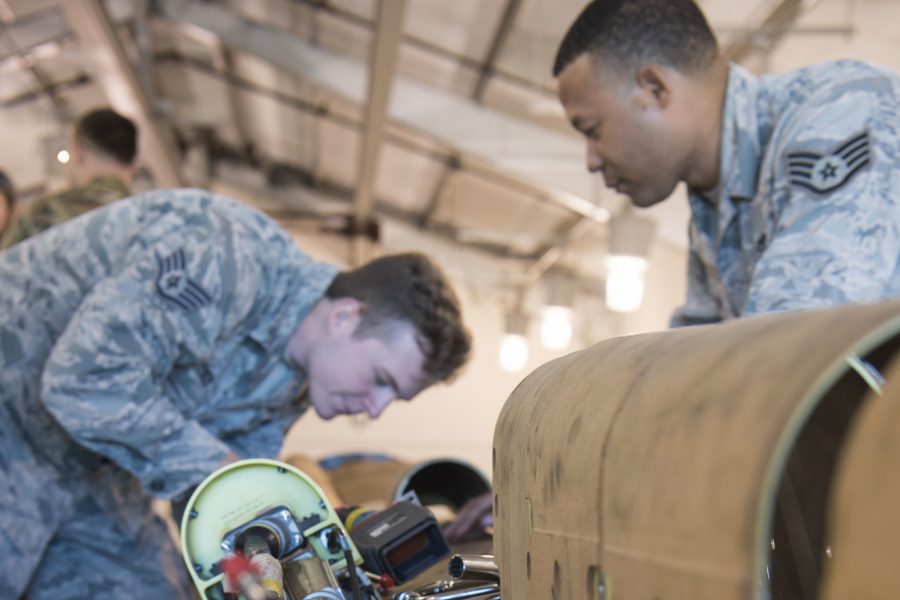VANDENBERG AIR FORCE BASE, CALIF.—Air Force Global Strike Command’s No. 2 officer said his organization is comfortable with how the next-generation land-based nuclear missile program is progressing despite having only one company involved in the design competition.
“What we have seen so far is going in an incredible direction, regardless of if we had multiple competitors or not,” Lt. Gen. Anthony Cotton, AFGSC’s deputy commander and the Air Force’s senior missileer, told reporters Feb. 3. “We’re not seeing any concern to think that the vendor will try to do something that is out of faith for us. We’re really comfortable in the … type of technologies that we’ve seen, the digital engineering that’s being done, the reviews that are being done by the [system program office], and looking at the requirements and looking at what the contractor is going to provide us.”
Last year, Boeing announced it would pull out of the Ground-Based Strategic Deterrent development effort, leaving Northrop Grumman as the sole option for providing one-third of America’s nuclear triad. Lawmakers and others have expressed concern that move would drive up the cost in the multi-billion-dollar program, but the Air Force has carried on without making the changes Boeing wanted as a condition of its staying in the competition.
If having one contractor is causing problems, Cotton said, “You would have heard about it by now.”
Officials argue certain aspects of GBSD, which weren’t in play when the Air Force bought its current inventory of Minuteman III missiles, are shaping an affordable program without competition to push cost down. The Air Force plans to own more of the technical rights to its new missiles, letting it perform certain upgrades and maintenance itself instead of relying on contractors. Three-dimensional simulation and modeling are also opening new possibilities for the team to digitally vet its designs without spending as much money on prototyping materials.
USAF plans to buy more than 600 GBSD missiles and wants them to start arriving in silos in the northern U.S. in fiscal 2029.
As the nuclear enterprise further enters the digital age, Cotton said AFGSC has to consider the possibility that algorithms might replace some Airmen. Around 10,600 people currently work for 20th Air Force, the organization that oversees America’s 400 deployed intercontinental ballistic missiles and related operations daily.
The Air Force is waiting on Northrop to decide how many people would need to run its system before reviewing manpower needs itself.
“That could be a possibility. We haven’t gone down that path yet,” he said of a smaller workforce. “How many people does it take to do a task today? And then how many people would it take to do a task tomorrow? We have to recognize that when we say there’s efficiencies, you might see efficiencies in manpower as well.”

